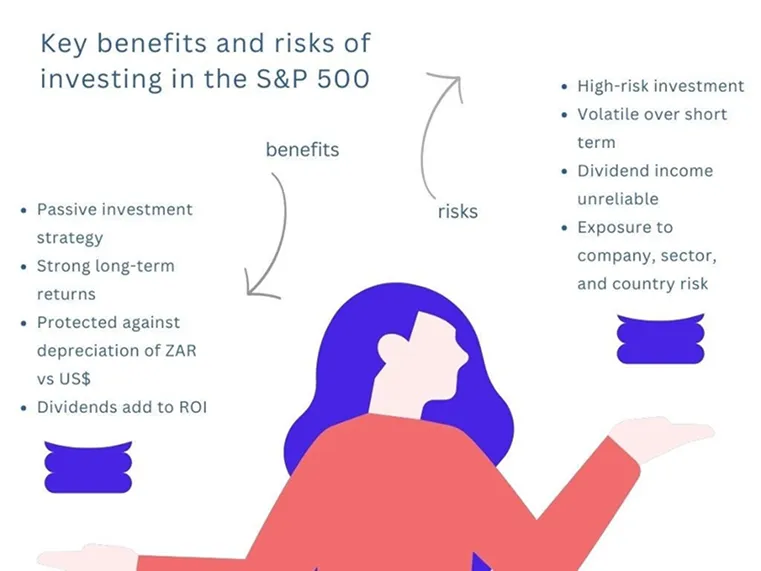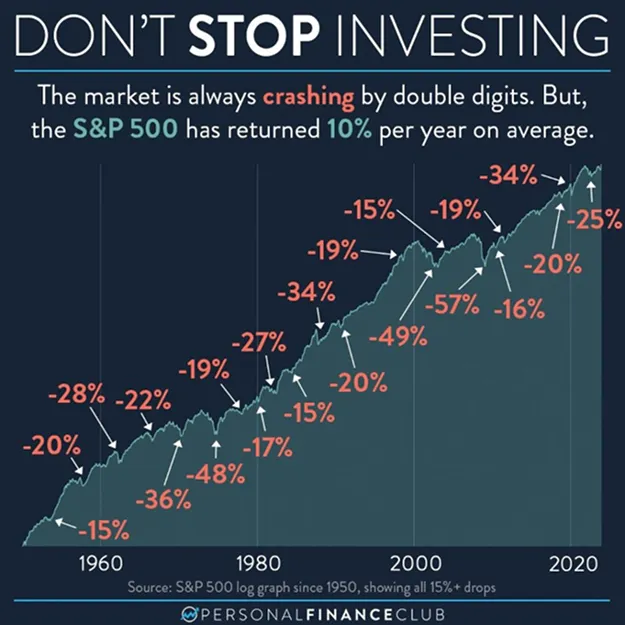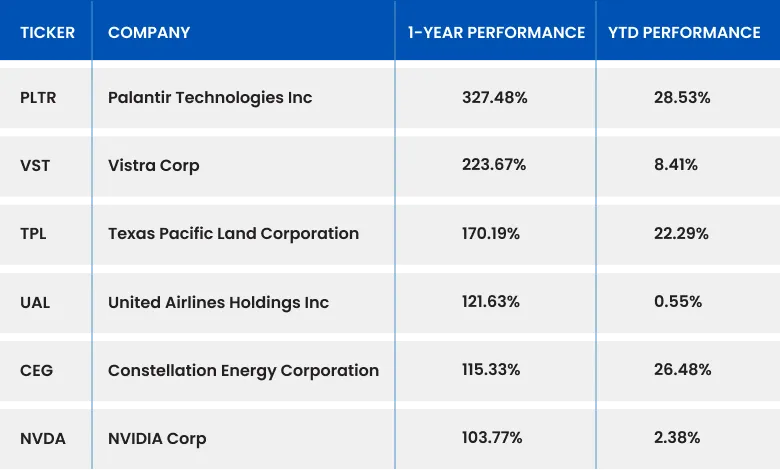

How to Invest in the S&P 500 for Beginners: A Step-by-Step Guide to Buying SPY
Learning to invest in the S&P 500 is a foundational strategy for many individuals seeking to build wealth over time. This comprehensive guide delves deep into understanding the S&P 500, the benefits and risks associated with investing in it, and the various methods to gain exposure to this prominent index.
What is the S&P 500?
The S&P 500, or Standard & Poor's 500, is a stock market index that tracks the performance of 500 of the largest publicly traded companies in the United States. Established in 1957, it serves as a barometer for the overall health of the U.S. economy and is widely regarded as the best single gauge of large-cap U.S. equities.
Composition and Weighting
The S&P 500 is market-capitalization-weighted, meaning each company's influence on the index is proportional to its market value. Larger companies like Apple, Microsoft, and Amazon significantly impact the index's performance more than smaller companies. This weighting method reflects the actual market influence of these major corporations on the broader economy.
Sector Representation
The index encompasses various sectors, including technology, healthcare, financials, consumer discretionary, and industrials, providing a comprehensive snapshot of the U.S. economy. This diversification across sectors helps mitigate the impact of downturns in any industry.

Figure 1: S&P 500 stock image
Why Invest in the S&P 500?
Benefits of Investing in the S&P 500
Historical Performance
Since its inception in 1957, the S&P 500 has delivered an average annual return of approximately 10%, making it an attractive option for long-term investors seeking consistent growth. While past performance doesn’t guarantee future results, the index’s track record demonstrates its resilience over time.
Diversification
Investing in the S&P 500 provides exposure to 500 leading companies across multiple sectors, reducing the risk associated with investing in individual stocks. This built-in diversification helps balance market fluctuations and sector-specific downturns.
Lower Risk Profile
The broad composition of the S&P 500 makes it less vulnerable to declines in any single stock or sector. This diversity helps mitigate volatility and smooth returns over time, offering a more stable investment option compared to holding a concentrated stock portfolio.
Accessibility
Investors can easily gain exposure to the S&P 500 through Exchange-Traded Funds (ETFs) and index funds, which come with relatively low fees and no high minimum investment requirements. This accessibility makes it a practical choice for both beginner and experienced investors.
Ideal for Passive Investing
The S&P 500 is well-suited for passive investors who prefer a hands-off approach. Unlike active stock picking, investing in the index requires minimal management and market timing, allowing investors to focus on long-term growth without frequent trading decisions.
 Figure 2: Benefits & risks of investing in the S&P 500
Figure 2: Benefits & risks of investing in the S&P 500
Risks of Investing in the S&P 500
While the S&P 500 offers reduced risk compared to individual stocks, it's not without its challenges:
Systematic Risk
Investors in the S&P 500 remain exposed to broad market risks such as inflation, interest rate changes, and geopolitical events that impact the entire economy. These factors can lead to market-wide declines regardless of individual company performance.
Market Volatility
The index can experience significant short-term fluctuations, especially during market corrections or bear markets. Investors must be prepared for periods of heightened volatility that can affect portfolio value.
Limited Diversification
The S&P 500 consists only of large-cap U.S. stocks, so it lacks exposure to mid-cap and small-cap companies, international markets, and other asset classes like bonds or commodities. This limitation can impact portfolio resilience in varying market conditions.
Concentration Issues
Because the index is market-cap weighted, a handful of top-performing companies or sectors can dominate its performance. This concentration increases volatility if those leading stocks experience downturns.
Inflation Impact
Over time, inflation reduces the purchasing power of investment returns. During periods of low market performance, inflationary pressures can further diminish real gains, affecting long-term investment growth.
Investors should consider these risks when allocating funds to the S&P 500 and explore diversification strategies to mitigate potential downsides.
How to Invest in the S&P 500
It's important to note that you cannot directly invest in the S&P 500 index. Instead, there are several ways to gain exposure to it:
1. Open a Brokerage Account
The first step in learning to invest in the S&P 500 is opening a brokerage account. This account lets you buy and sell financial assets like ETFs, stocks, and mutual funds. Many reputable brokerages offer commission-free trading for ETFs and low minimum deposits, making it accessible for beginners.
2. Fund Your Account
After opening your brokerage account, transfer funds from your bank account. Your initial investment should align with your financial goals and risk tolerance. Many platforms allow you to start with as little as $100; several now offer fractional shares, enabling you to invest even smaller amounts.
 Figure 3: S&P 500 portfolio
Figure 3: S&P 500 portfolio
3. Choose Your Investment Method
There are three primary ways to invest in the S&P 500:
S&P 500 Index Funds
S&P 500 index funds are mutual funds designed to track the index's performance. Unlike stocks, these funds are bought and sold at the end of the trading day at the closing price. They offer low expense ratios, making them a cost-effective way to gain exposure to the market.
Additionally, many index funds provide automatic dividend reinvestment, allowing investors to compound their returns over time. However, some funds may have minimum investment requirements, which investors should consider before purchasing.
S&P 500 ETFs (Exchange-Traded Funds)
ETFs track the S&P 500 but trade like individual stocks, meaning they can be bought and sold throughout the trading day. This flexibility makes them an attractive option for investors who prefer intraday trading opportunities.
ETFs typically have low expense ratios and do not require a minimum investment—aside from the cost of at least one share (or fractional shares, if available). Popular options include the SPDR S&P 500 ETF Trust (SPY), one of the world’s most widely traded funds.
Investing in Individual Stocks
Instead of buying index funds or ETFs, investors can purchase individual stocks of companies within the S&P 500. This approach requires extensive research and monitoring to identify strong performers. Additionally, achieving proper diversification with individual stocks requires significant capital, as investors need a well-balanced portfolio to mitigate risk. Active portfolio management is essential for those choosing this route.
For most investors, particularly beginners, index funds and ETFs provide the simplest and most cost-effective way to invest in the S&P 500, offering broad market exposure with minimal effort.
4. Determine Your Investment Strategy
Before investing in the S&P 500, deciding whether you prefer a long-term investment approach or a more active trading strategy is essential.
Long-Term Investing
A long-term strategy involves buying and holding S&P 500 funds for years or even decades, focusing on steady growth rather than short-term price movements. Many long-term investors use dollar-cost averaging (DCA)—investing a fixed amount at regular intervals—to reduce the impact of market volatility and avoid the risks of trying to time the market. This approach is ideal for those seeking consistent returns with minimal active management.
Active Trading
Active trading requires frequent buying and selling, aiming to capitalize on short-term price fluctuations. This approach demands closer market monitoring, technical analysis skills, and a solid understanding of market trends. Since trading involves higher risk and potential transaction costs, it is generally more suited for experienced investors who can manage short-term volatility effectively.
For beginners, a long-term strategy using dollar-cost averaging is often the best entry point. It provides market exposure while helping to mitigate the impact of short-term volatility.
 Figure 4: S&P 500 investment return
Figure 4: S&P 500 investment return
5. Build a Market Assumption
Before investing, developing a market hypothesis based on available analysis and information is important. This assumption helps shape your investment decisions and guides your overall strategy.
To build a strong market assumption, consider the following:
Technical Analysis: Examine price charts, historical trends, and patterns to identify potential market movements.
Fundamental Analysis: Assess economic indicators, corporate earnings reports, and financial statements to determine market strength and investment opportunities.
External Factors: Consider the impact of geopolitical events, industry developments, and Federal Reserve policies, as these can influence market performance.
A well-formed market assumption provides clarity and direction for your investments. However, markets evolve, so it's crucial to regularly refine your assumptions as new data and trends emerge.
6. Execute Your Investment
Once you've chosen your preferred investment method, it's time to place your trade:
For ETFs: Enter the ticker symbol (e.g., SPY) and specify either the dollar amount or the number of shares you wish to buy.
For Index Funds: Submit a purchase order, which will be executed at the end of the trading day at the fund’s net asset value (NAV).
For Individual Stocks: Research and select specific companies from the S&P 500 that align with your investment strategy and risk tolerance.
Monitor Your Investment
The frequency of monitoring depends on your strategy:
Long-term investors may only need to check their portfolios quarterly or annually to ensure their investments align with their financial goals.
Active traders should monitor their positions more frequently (daily or weekly) to respond to short-term price movements and manage risk effectively.
While staying informed about market trends and economic news is essential, avoiding emotional reactions to short-term fluctuations is important.
Plan Your Exit Strategy
A clear exit plan is crucial for long-term success:
For long-term investors, the goal may be to hold investments until retirement or a specific financial milestone.
For active traders, setting stop-loss orders (to limit losses) and take-profit orders (to secure gains) ensures disciplined decision-making and risk control.
Having predetermined exit points helps remove emotional bias and protect capital from unnecessary risk.
Review and Refine Your Strategy
Regularly assessing your investment performance is key to long-term success:
Evaluate whether your investments are meeting your financial goals.
Rebalance your portfolio if the S&P 500 allocation grows too large relative to other assets.
Adjust your approach based on changing financial circumstances or evolving market conditions.
By periodically refining your strategy, you can stay aligned with your investment objectives while adapting to market shifts and opportunities.
S&P 500 Investment Performance
To understand the potential of S&P 500 investments, consider the performance of some of the top-performing stocks in the index as of February 2025:

While these individual performers show impressive returns, it's important to remember that the S&P 500 provides more stable, diversified exposure to the U.S. market.
Considerations for 2025 Investors
How can you plan your S&P 500 investment strategy in 2025? Keep these factors in mind:
Expense Ratios: Compare the expense ratios of different S&P 500 funds, as even small differences can significantly impact your returns over time.
Broader Diversification: For a well-rounded portfolio, consider complementing your S&P 500 investment with exposure to mid-cap and small-cap stocks, international markets, and fixed-income assets.
Market Timing Concerns: Many financial experts suggest avoiding excessive worry about market entry points. The market's long-term trajectory rewards consistent investors regardless of the entry point.
Concentration Risk: The S&P 500 is market-cap-weighted, so a few large companies can significantly influence the index's performance. In 2025, this may mean technology stocks have an outsized impact on returns.
Tax Considerations: If investing outside of tax-advantaged accounts, be
mindful of the tax implications of dividends and capital gains from your S&P 500 investments.
Is Investing in the S&P 500 Right for You?
Many new and experienced investors ask how to invest in the S&P 500 when looking for long-term market exposure. As one of the most reliable and diversified investment options, the S&P 500 offers an accessible way to build wealth through passive investing.
For most investors, especially beginners, starting with a low-cost S&P 500 index fund or ETF and employing a disciplined, long-term investment strategy represents the most straightforward path to financial success. By understanding the benefits and limitations of S&P 500 investing, you can make informed decisions aligning with your unique financial goals and risk tolerance.
Free Trading Courses and Resources
Success in trading requires skill, knowledge, and practice. TMGM provides free courses and webinars to help traders at all levels. Test your strategies risk-free with a demo account funded with US$100,000 in virtual capital before trading live.
今日更明智地進行交易






賬戶
賬戶注資
交易



